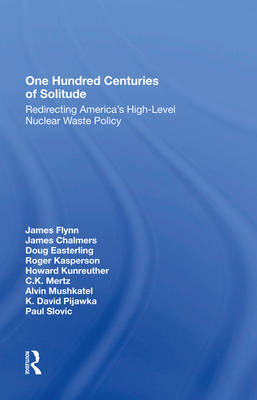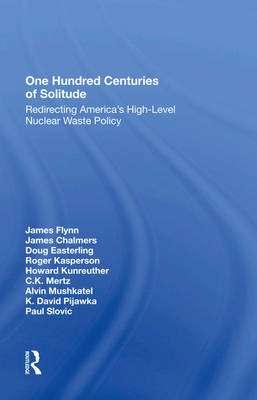
- Afhalen na 1 uur in een winkel met voorraad
- Gratis thuislevering in België vanaf € 30
- Ruim aanbod met 7 miljoen producten
- Afhalen na 1 uur in een winkel met voorraad
- Gratis thuislevering in België vanaf € 30
- Ruim aanbod met 7 miljoen producten
Zoeken
One Hundred Centuries of Solitude
Redirecting America's High-Level Nuclear Waste Policies
James Flynn, James Chalmers, Doug Easterling, Roger Kasperson, Howard Kunreuther
Hardcover | Engels
€ 195,95
+ 391 punten
Uitvoering
Omschrijving
Time is both the ally of high-level nuclear waste (HLNW) managers and the enemy. It is the ally because the radioactivity in elements and isotopes decreases with age, making the waste progressively less dangerous to human health and safety and the environment. This rate of radioactive decline varies, in some cases diminishing by half (the half life) in seconds, minutes, hours, days, weeks, months, or years. In other cases the decay process takes centuries or hundreds of thousands of years before the wastes are safe for human contact. The problem as now conceptualized for HLNW managers is simple to state if not easy to achieve. The HLNW needs to be secured in some fashion until it decays, by virtue of its physical nature, to safe levels. Another possible future solution, not currently available, might be to change the ructure of HLNW through high-technology processing and thus decompose the waste into units with different and less lengthy radioactivity. Learning whether this processing is a future option will require patience and generous amounts of time for research.
Specificaties
Betrokkenen
- Auteur(s):
- Uitgeverij:
Inhoud
- Aantal bladzijden:
- 129
- Taal:
- Engels
Eigenschappen
- Productcode (EAN):
- 9780367281908
- Verschijningsdatum:
- 13/09/2019
- Uitvoering:
- Hardcover
- Formaat:
- Genaaid
- Afmetingen:
- 152 mm x 241 mm
- Gewicht:
- 362 g

Alleen bij Standaard Boekhandel
+ 391 punten op je klantenkaart van Standaard Boekhandel
Beoordelingen
We publiceren alleen reviews die voldoen aan de voorwaarden voor reviews. Bekijk onze voorwaarden voor reviews.











